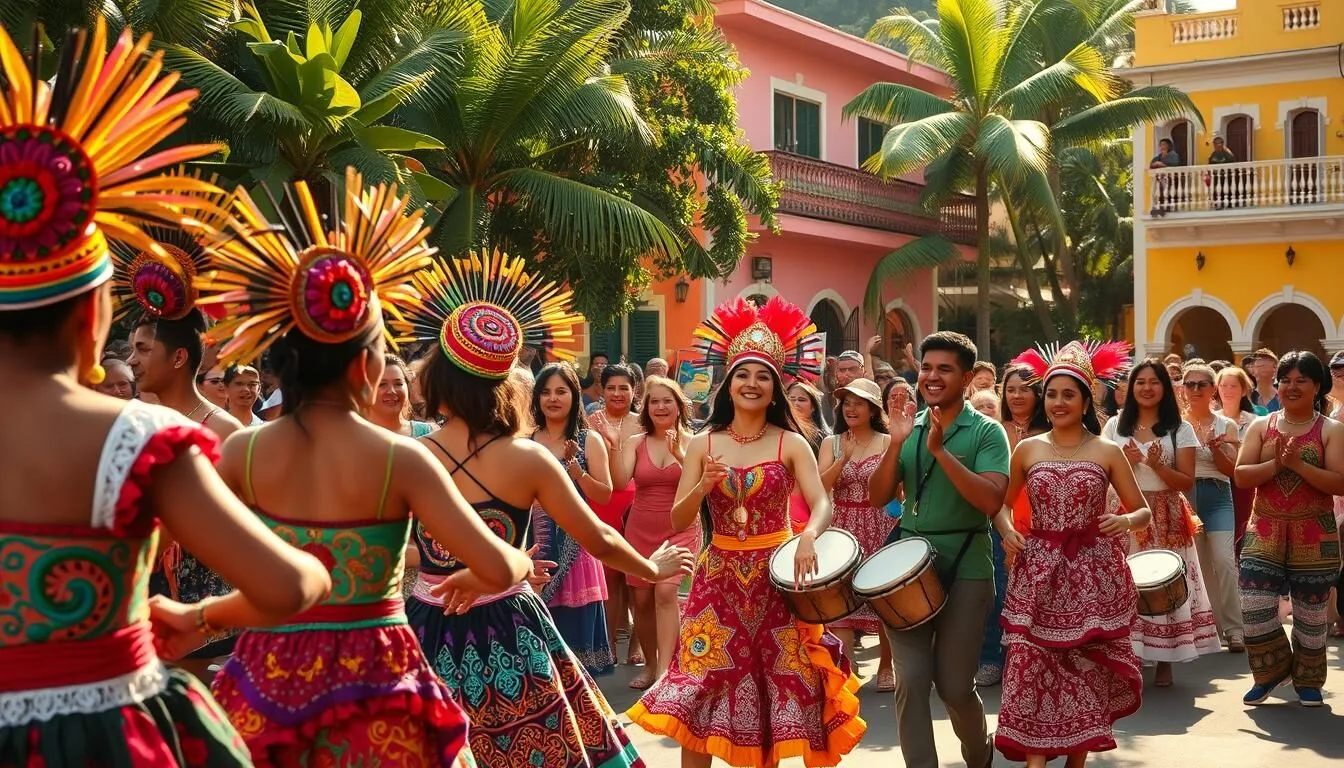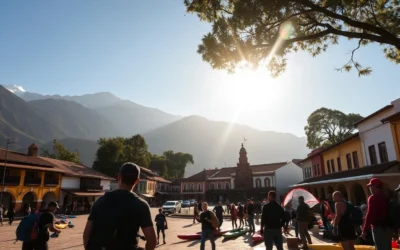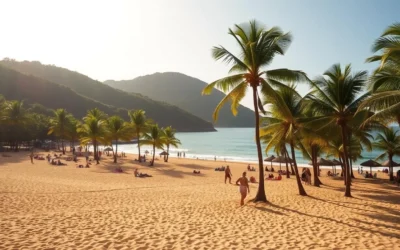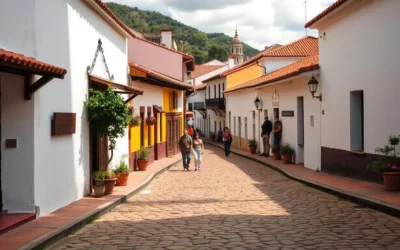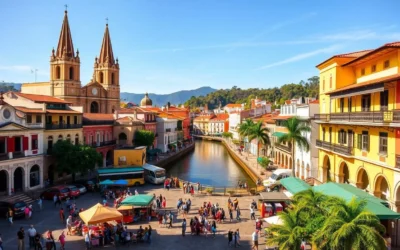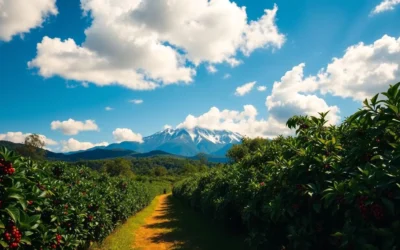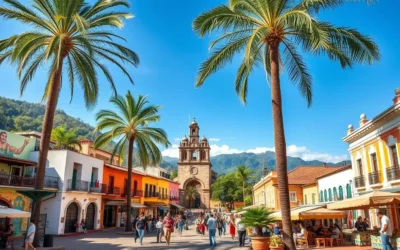Did you know that Colombia hosts some of the world’s most colorful and vibrant festivals, showcasing its rich cultural heritage and diversity? From the renowned Barranquilla Carnival to the solemn Semana Santa in Popayán, these celebrations offer a unique glimpse into the heart of this welcoming nation.
These events reflect Colombia’s diverse cultural influences, blending indigenous, African, and European traditions. By planning your trip around one of these festivals, you can transform your experience into an unforgettable adventure. Whether you’re drawn to music, dance, or cultural exhibitions, there’s a Colombian celebration that will capture your imagination.
Discovering Colombia Through Its Vibrant Festivals
Experience the essence of Colombia through its diverse and lively festivals. Colombia is a country that wears its heart on its sleeve, and its festivals are a testament to its rich cultural heritage.
The festivals in Colombia serve as living museums, preserving and celebrating the country’s traditions through music, dance, costumes, and culinary delights. Each region has developed its own distinct celebrations, reflecting the unique history, geography, and cultural influences of the area.
| Region | Festival | Highlights |
|---|---|---|
| Caribbean Coast | Barranquilla Carnival | Parades, music, and dance |
| Andean Highlands | Feria de Cali | Salsa dancing, cultural events |
| Amazon Rainforest | Festival del Río Amazonas | Indigenous cultural practices |
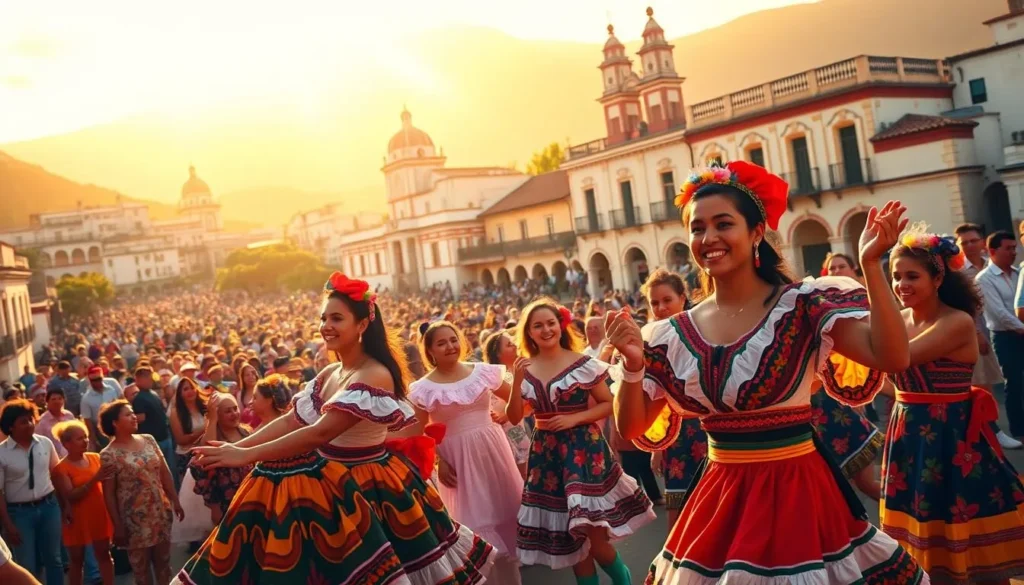
By attending a festival in Colombia, you can immerse yourself in the local culture and participate in centuries-old traditions. With a festival calendar that spans the entire year, there’s always a celebration happening somewhere in the country.
Why Colombian Festivals Should Be on Your Travel Bucket List
For travelers seeking unique experiences, Colombianfestivalsoffer an unforgettable journey into the heart of the country’s diverse heritage.
Colombianfestivalsprovide a unique opportunity forvisitorsto experience the country’s legendary hospitality firsthand. You can join in the most cherishedcelebrations, gaining a deeper understanding of local traditions and values.
Here are some reasons why you should consider attending Colombianevents:
- Unlike more commercialized events in other countries, many Colombian festivals maintain their authentic culture roots.
- The diversity of Colombia’s festivals reflects the country’s varied geography and multicultural heritage.
- These events combine multiple elements that appeal to all senses – vibrant visuals, infectious music, delicious food, and the palpable energy of communal celebration.
- For photographers and culture enthusiasts, Colombian festivals provide unparalleled opportunities to capture and experience the country’s rich cultural expressions.
By participating in a local festival, you’ll create memories and connections that last a lifetime.
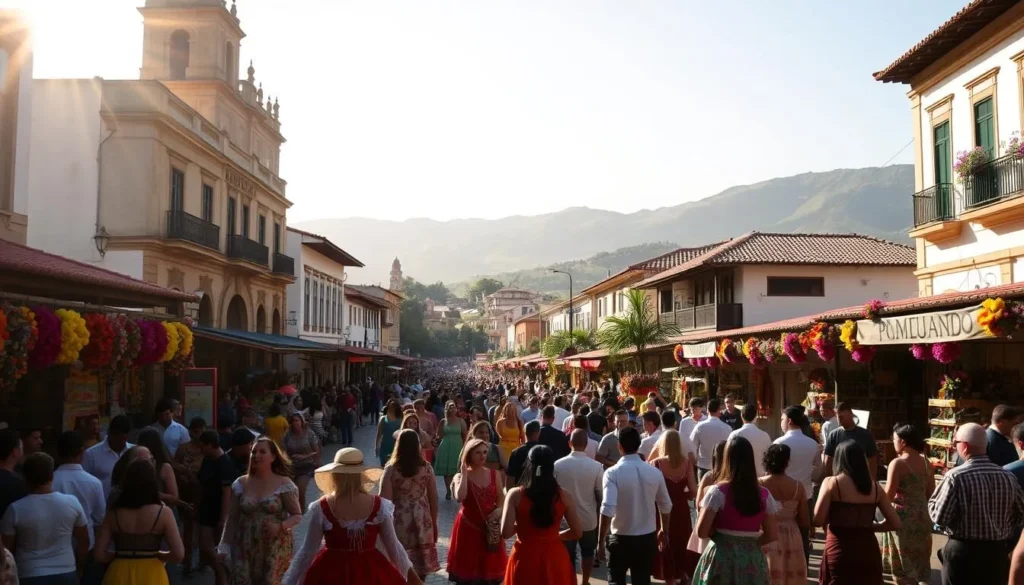
Barranquilla Carnival: The Second Largest Carnival in the World
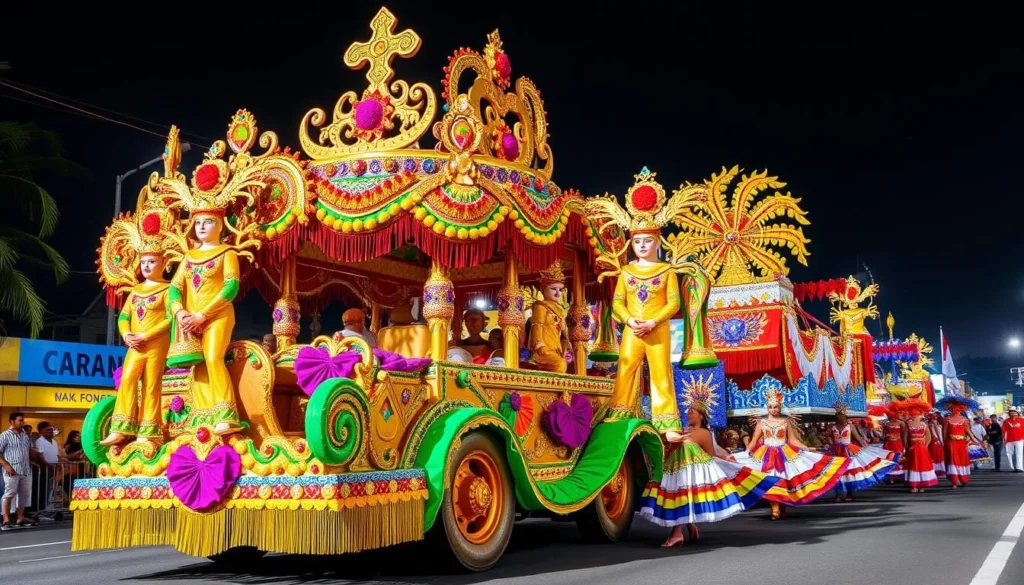
Experience the vibrant Barranquilla Carnival, a spectacle that’s second only to Rio de Janeiro in scale and grandeur. This celebration is spearheaded by its beloved mascot, Joselito Carnival, who comes to life to the sound of cumbia, puya, and other musical genres. The festivities take place during the four days preceding Ash Wednesday, typically in February or early March.
The Barranquilla Carnival is recognized as the second-largest carnival in the world, earning UNESCO Intangible Cultural Heritage status for its cultural significance. It’s a celebration that blends Spanish, African, and indigenous traditions, creating a unique event that has evolved over more than a century.
What to See and Do in Barranquilla During Carnival
The highlight of the Barranquilla Carnival is the Batalla de Flores (Battle of Flowers), a grand parade featuring elaborate floats, traditional dance groups, and the Carnival Queen. You can also witness the Gran Parada de Tradición (Great Parade of Tradition) and the Gran Parada de Fantasía (Great Parade of Fantasy), showcasing the diversity of Colombian cultural expressions.
Visitors can immerse themselves in Colombian Caribbean culture by witnessing traditional cumbia, mapale, and puya dances performed in authentic costumes. The carnival features distinctive characters like Marimonda, El Garabato, and La Muerte, each with their own traditional costumes and dances.
Carnaval de Blancos y Negros: Colombia’s Oldest Street Celebration
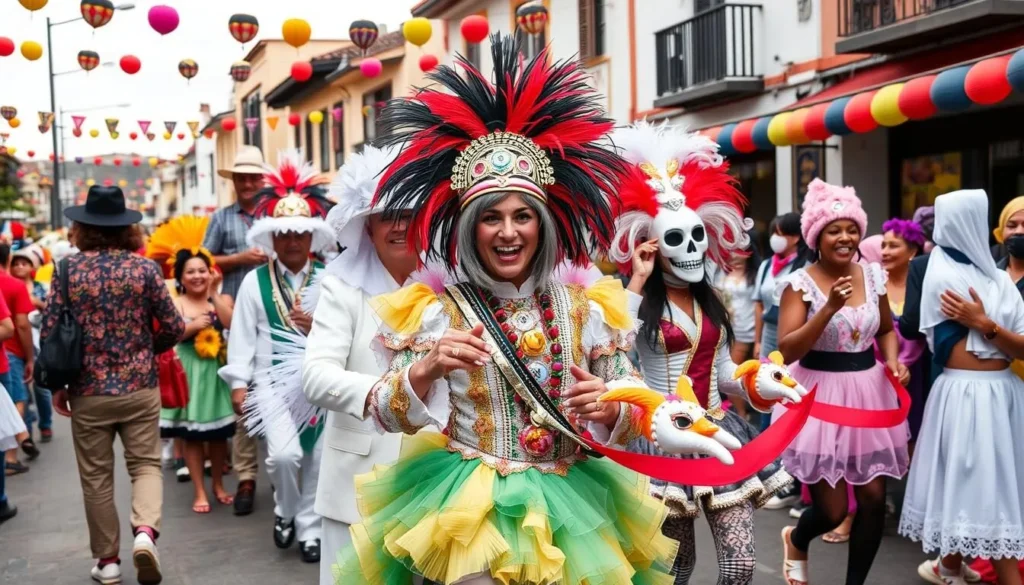
Every January, the city of Pasto comes alive with the Carnaval de Blancos y Negros, a celebration that embodies the rich cultural heritage of Colombia. This event takes place annually during the first week of January, making it one of the first major festivities of the year.
The Carnaval de Blancos y Negros is Colombia’s oldest street celebration, dating back to 1546, and has been recognized by UNESCO as an Intangible Cultural Heritage of Humanity. It is characterized by its two signature days: January 5th, when participants paint themselves and others with black cosmetics, and January 6th, when white powder is used instead. The streets of Pasto are filled with music, dancing, and traditional food, showcasing the city’s vibrant culture.
This city‘s traditions blend indigenous, African, and European influences, creating a unique cultural identity. The carnival serves as a powerful symbol of unity, where people of all backgrounds come together to celebrate their differences and shared humanity.
Feria de Cali: Dancing the Year Away
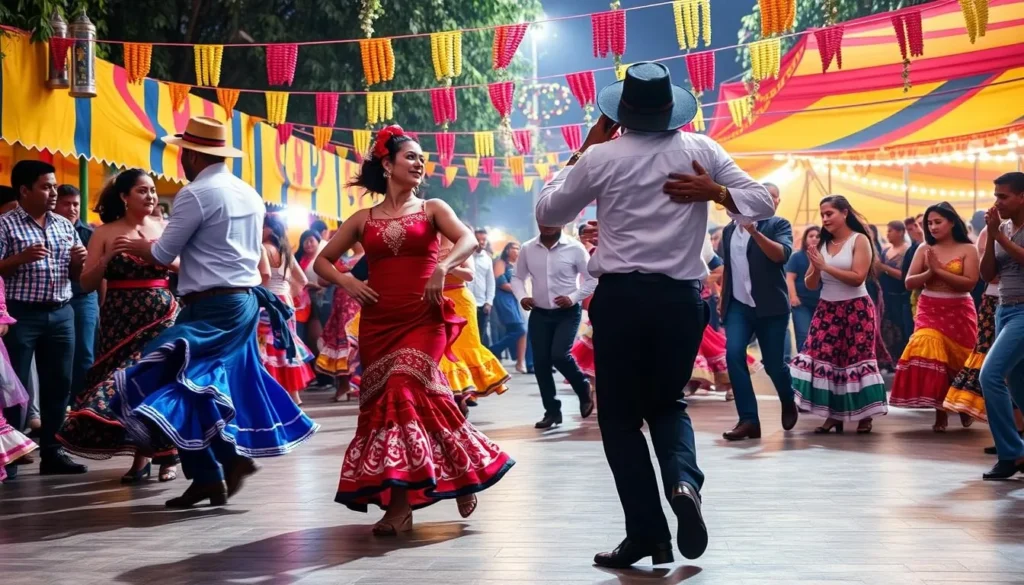
Step into the world of salsa and celebration at the Feria de Cali, where the city’s passion for dance and music takes center stage. The Feria de Cali, held annually from December 25-30, transforms the city of Cali into the world’s salsa capital, attracting dancers and music lovers from around the globe.
The festival originated in 1957 and has evolved into a celebration that perfectly captures Cali’s reputation as the “Capital of Salsa.” The Salsódromo, a massive street parade featuring thousands of the world’s best salsa dancers in colorful costumes, kicks off the festival with an explosion of rhythm and movement.
Salsa Events Not to Miss in Cali
Throughout the six-day celebration, you can experience numerous salsa events, from world-class competitions to impromptu street performances and dance lessons for beginners. The festival includes concerts featuring renowned salsa bands and artists, both local legends and international stars, performing at venues throughout the city.
For salsa enthusiasts, the festival offers opportunities to visit the city’s famous salsa clubs, where you can dance until dawn with locals who are always eager to share their passion for the rhythm. The year-end timing of this festival makes it a perfect way to celebrate the holiday season with a uniquely Colombian flair, dancing the old year away and welcoming the new one.
Festival de la Leyenda Vallenata: Celebrating Colombia’s Musical Heritage
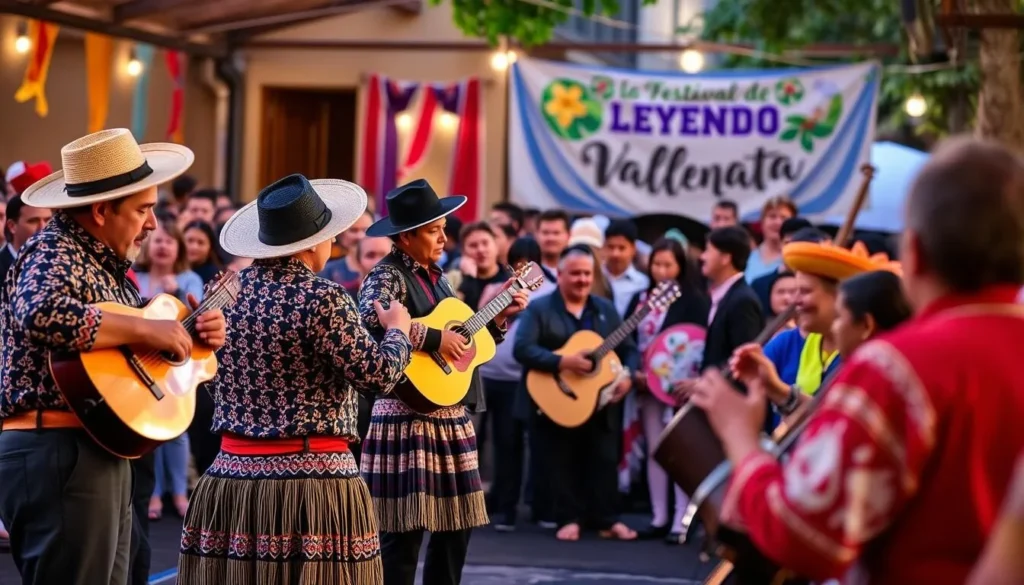
The Festival de la Leyenda Vallenata is a testament to Colombia’s love for music, particularly the iconic vallenato genre. This celebration, held annually in late April in Valledupar, is the cultural heart of vallenato music, a distinctive folk style that originated in Colombia’s Caribbean region.
Vallenato music tells stories of love, daily life, and local legends through poetic lyrics, accompanied by three key instruments: the accordion, the caja (a small drum), and the guacharaca (a ribbed wooden stick scraped with a fork-like tool). The festival includes a prestigious competition to crown the “Rey Vallenato” (Vallenato King), where accordion players demonstrate their mastery of traditional rhythms.
Beyond the competition, the festival features concerts by famous vallenato artists, street performances, craft exhibitions, and traditional food from the region. It’s an opportunity to experience authentic vallenato in its birthplace and understand its significance in Colombian cultural identity. The celebration also includes “parrandas vallenatas,” informal gatherings with music and traditional drinks.
The Festival de la Leyenda Vallenata has contributed to vallenato music gaining international recognition, with UNESCO declaring it an Intangible Cultural Heritage of Humanity in 2015. This event is a must-experience for music enthusiasts and those looking to immerse themselves in Colombian culture.
Feria de las Flores: Medellín’s Flower Festival
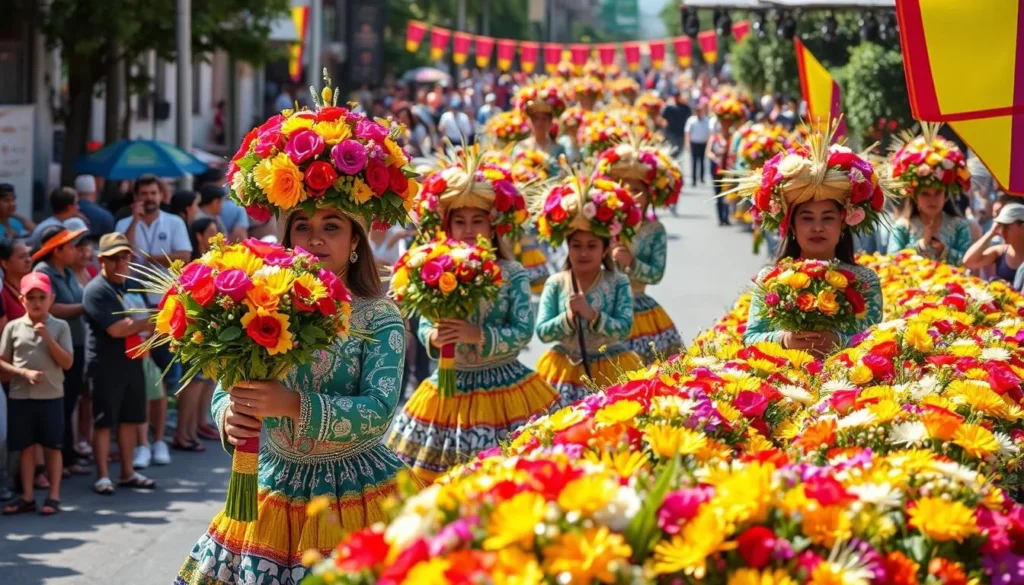
Medellín’s Flower Festival is a kaleidoscope of colors and traditions that captivate visitors worldwide. The Feria de las Flores transforms the city of Medellín into a vibrant botanical showcase during the first two weeks of August, celebrating the region’s rich flower-growing tradition.
The festival, which began in 1957, has grown into one of Colombia’s most important cultural celebrations, attracting visitors from around the world to witness its unique traditions. The centerpiece of the festival is the Desfile de Silleteros (Silleteros Parade), where flower farmers from Santa Elena carry enormous, intricately designed flower arrangements on their backs through the streets of Medellín.
The Silleteros: Guardians of a Unique Tradition
The silleteros are the guardians of a tradition that dates back to colonial times. They carry wooden structures covered with flowers, symbolizing the times when farmers used to go down the mountain to Medellín to sell flowers and other merchandise in the city. This event is a testament to the artistry and dedication of the silleteros.
The Silleteros Parade is a breathtaking parade that showcases the incredible diversity of flowers grown in the region. For visitors, the festival offers a perfect opportunity to experience Medellín’s transformation from its troubled past to its current status as one of Colombia’s most innovative and culturally rich city.
Semana Santa in Popayán: Colombia’s Most Solemn Celebration
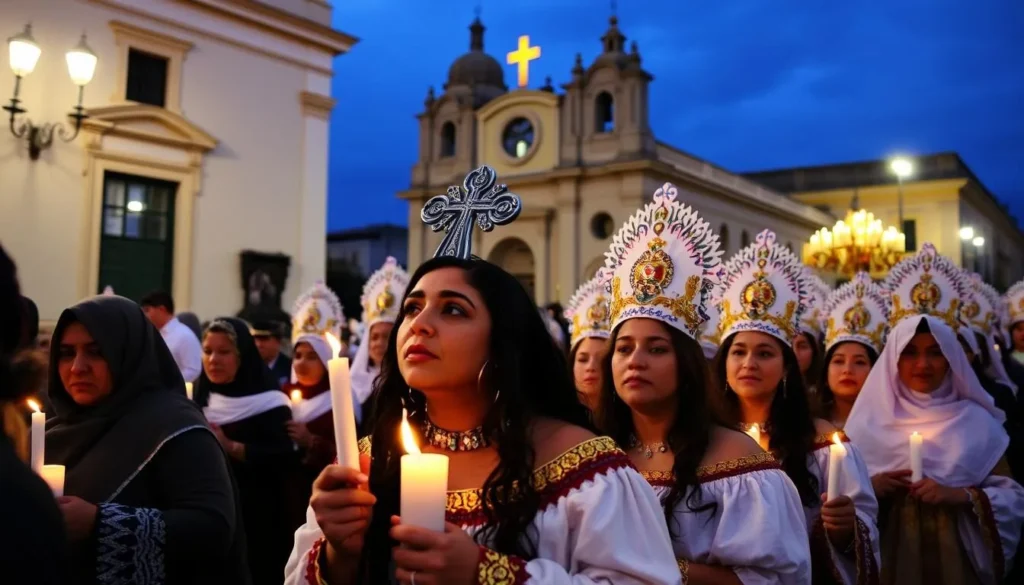
Experience the profound spiritual heritage of Colombia during Semana Santa in Popayán. This historic town is renowned for its solemn Holy Week celebrations, which date back to 1566 and have been recognized by UNESCO as an Intangible Cultural Heritage of Humanity.
During this significant religious event, thousands of visitors gather to witness the nightly processions that wind through the historic streets of Popayán. Participants, often dressed in colorful robes, carry elaborate religious statues depicting scenes from the Passion of Christ, creating a poignant and deeply moving celebration.
The processions follow traditional routes, with heavy wooden platforms adorned with religious figures, flowers, and candles. This event is a unique blend of deep religious devotion and artistic expression, offering a glimpse into Colombia’s rich cultural heritage.
Festival Internacional de Cine de Cartagena: South America’s Oldest Film Festival
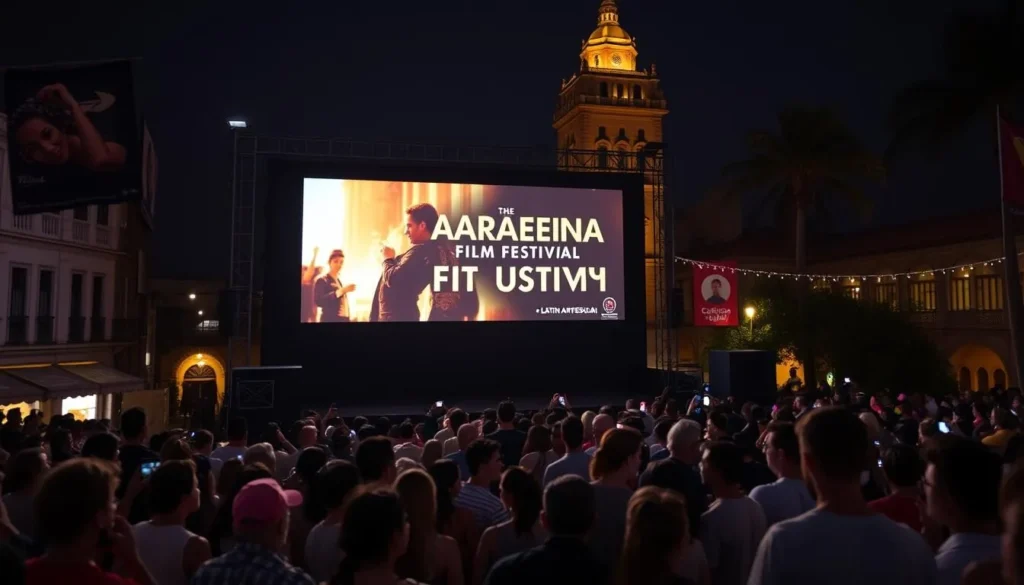
The Festival Internacional de Cine de Cartagena (FICCI), established in 1960, is South America’s oldest film festival and a premier event in Latin America’s cinematic calendar. Held annually in March, the festival transforms the historic city of Cartagena de Indias into a vibrant hub for film enthusiasts from around the world.
With a focus on promoting Latin American and Caribbean cinema, FICCI showcases a diverse range of films, attracting renowned filmmakers and industry professionals to this beautiful city. One of the festival‘s most cherished traditions is its free outdoor screenings, allowing both locals and visitors to enjoy cinema under the stars in various public spaces throughout the place.
Yipao: The Coffee Region’s Unique Jeep Festival
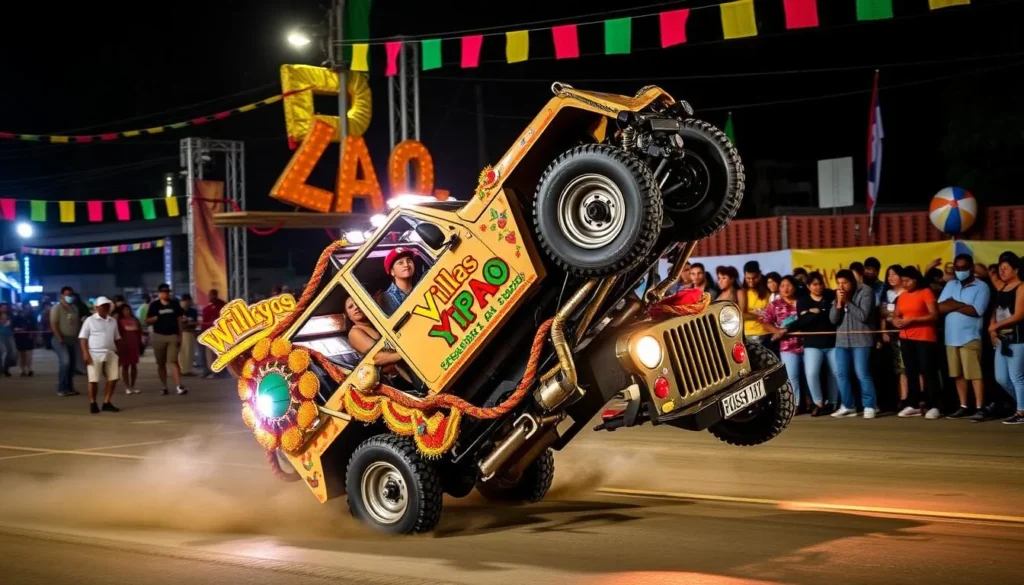
The Yipao festival is a one-of-a-kind event in Colombia’s coffee region, celebrating the Willys Jeeps that have been a staple in the region since the 1940s. Held annually in June in the town of Calarcá, this festival is a testament to the ingenuity and resilience of the local community.
At the heart of the Yipao celebration is the Jeep parade, where drivers showcase their vehicles’ capabilities by performing impressive stunts, including the famous “yipao pique” where the front of the Jeep lifts off the ground. These Jeeps are not only unique in their ability to navigate the challenging terrain of the coffee region but are also elaborately decorated and loaded with various goods, highlighting their importance in daily life and the local economy.
The festival includes competitions for the most beautifully decorated Jeep, the heaviest load, and the best stunts, demonstrating the skill and creativity of the drivers. Beyond the Jeep displays, visitors can enjoy traditional music, dance performances, coffee tastings, and regional cuisine, making Yipao a comprehensive showcase of the coffee region’s culture and a significant part of Colombia’s cultural heritage.
Festival de Música del Pacífico Petronio Álvarez: Celebrating Afro-Colombian Culture
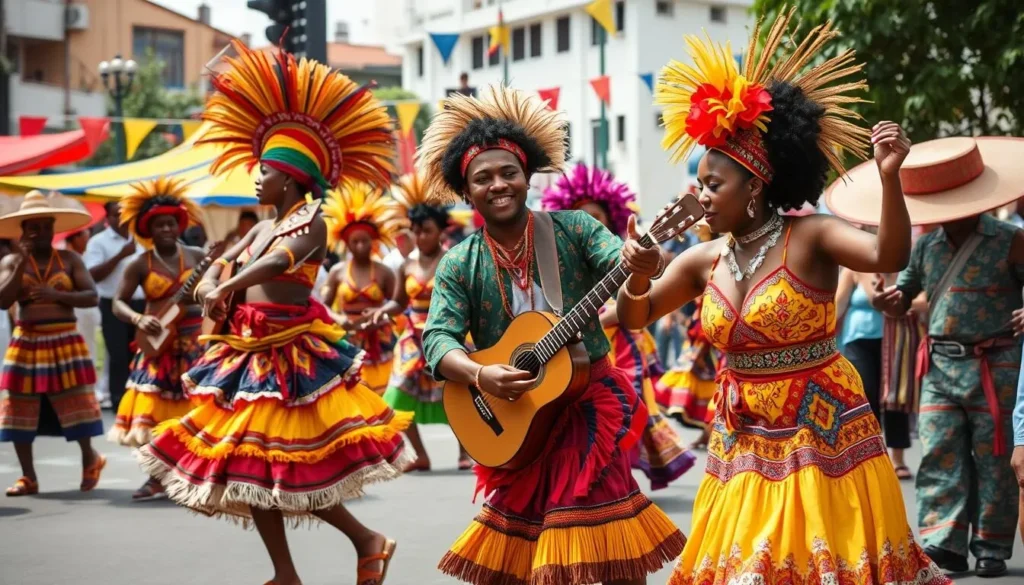
The Festival de Música del Pacífico Petronio Álvarez is a must-attend event for anyone looking to experience the authentic sounds of Afro-Colombian music. Held annually in August in the city of Cali, this festival has grown significantly since its inception in 1997.
Celebrating Afro-Colombian Culture: The festival is dedicated to preserving and promoting the unique music traditions of Colombia’s Pacific coast. It features various categories, including best unpublished song, best singer, and best interpretation with traditional instruments like the marimba de chonta and cununo drums.
The event attracts over 100 participating groups each year, showcasing traditional Pacific music styles such as currulao, bunde, juga, and alabaos. Beyond music, the festival celebrates Afro-Colombian culture through dance, gastronomy, and artisanal crafts, offering a complete immersion in Pacific coast traditions.
This celebration has become a vital part of Colombia’s cultural landscape, helping to preserve musical traditions that were once at risk of disappearing. For music lovers, it’s a rare opportunity to experience authentic Afro-Colombian music in the southwest region of Colombia.
Noche de Velitas: The Night of Little Candles
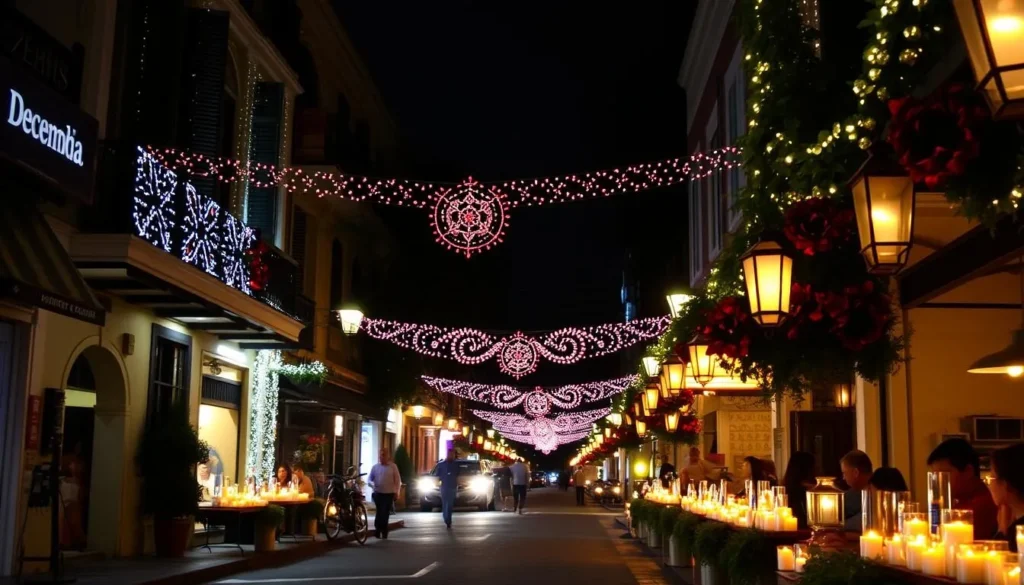
The Night of Little Candles, or Noche de Velitas, is a cherished Colombian tradition that marks the beginning of the Christmas season every year on December 7th.
This celebration honors the Immaculate Conception of the Virgin Mary, with families placing candles and paper lanterns on windowsills, balconies, streets, and parks to light the Virgin Mary’s way.
As night falls, the streets of Colombia come alive with the warm glow of thousands of candles, creating a magical atmosphere as families and neighbors gather to enjoy the spectacle together in their local place.
The Noche de Velitas is a country-wide celebration that takes place across Colombia, transforming cities and towns throughout the country.
Lesser-Known Colombian Festivals Worth Experiencing
Colombia’s cultural calendar is filled with hidden gems, from vibrant town festivals to regional events that showcase the country’s diverse traditions. Beyond the popular festivals, numerous lesser-known festivals Colombia offer authentic cultural experiences in smaller towns and regions throughout the country.
Some notable examples include the Festival del Diablo in Riosucio, which features satirical poetry, music, and dance centered around a benevolent devil figure. The Festival Nacional del Bambuco in Neiva celebrates traditional bambuco music and dance, while the Feria de Manizales combines Spanish-inspired bullfighting with coffee competitions and the famous Yipao jeep parade.
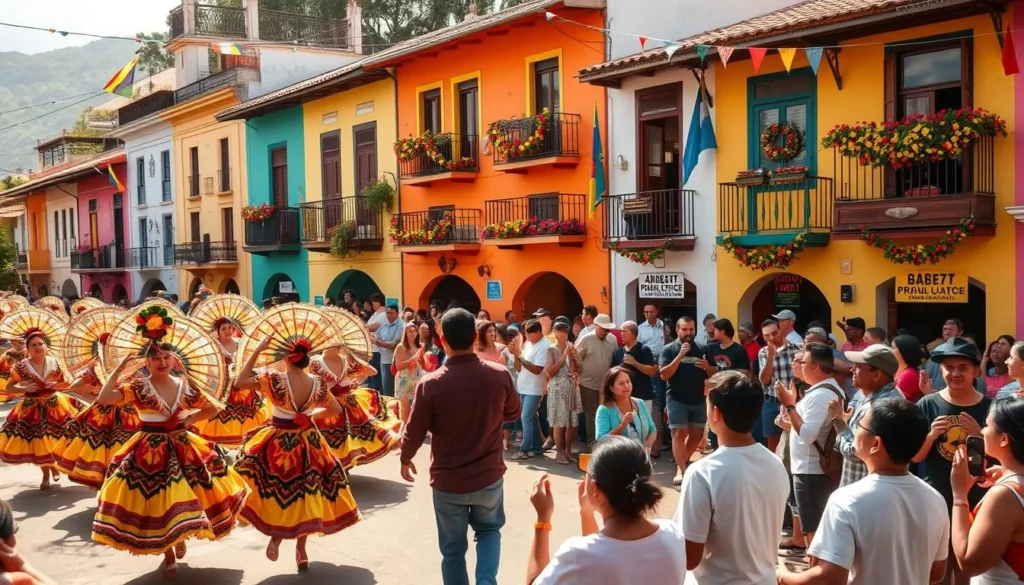
Other unique events worth experiencing are the Festival de Cine Verde in Barichara, focusing on environmental documentaries, and the Festival del Viento y las Cometas in Villa de Leyva, which fills the sky with colorful kites every August. These smaller festivals provide more intimate experiences, allowing visitors to interact directly with locals and participate in time-honored traditions.
Tips for Planning Your Colombian Festival Experience
When planning your trip to experience Colombia’s vibrant festivals, there are several key factors to consider. Planning ahead is crucial, especially for major celebrations like the Barranquilla Carnival or the Flower Festival.
- Book accommodations early as they fill up quickly.
- Consider the timing of your visit to avoid larger crowds and higher prices.
- Pack according to the festival’s specific needs, such as costumes or rain protection.
- Be prepared to adjust your schedule as festival events may run late or change without much notice.
Understanding the local customs and traditions will enhance your experience. Connecting with locals or tour guides can also provide valuable insights into the best viewpoints and exclusive events.
Essential Spanish Phrases for Festival-Goers
Learning a few essential Spanish phrases can greatly enhance your festival experience in Colombia. Phrases like “¿Dónde está…?” (Where is…?) and “¡Disculpe!” (Excuse me!) can be very useful.
| Phrase | Translation |
|---|---|
| ¿Dónde está…? | Where is… |
| ¡Disculpe! | Excuse me! |
| ¿Cuánto cuesta? | How much does it cost? |
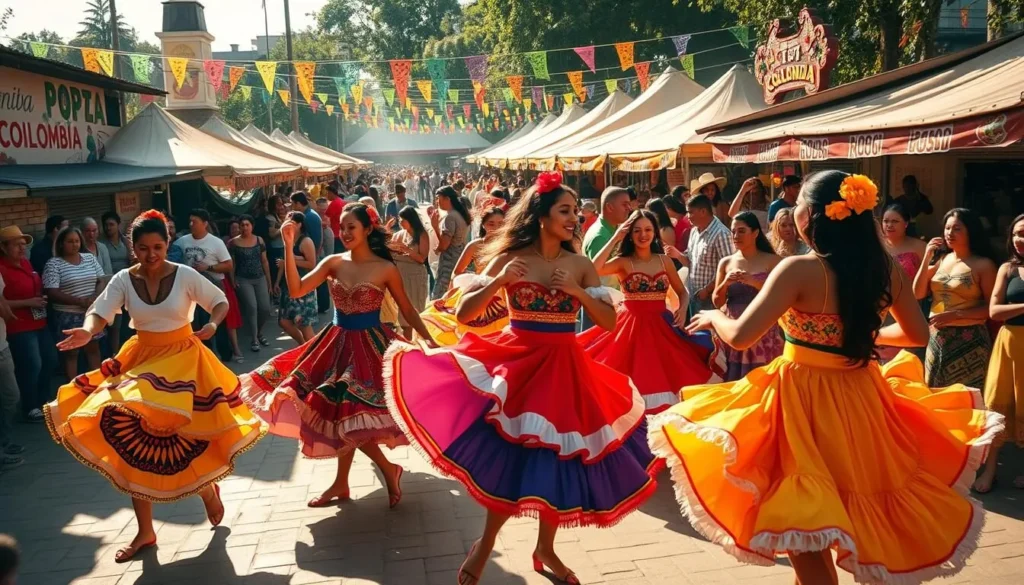
Conclusion: Embracing the Joy of Colombian Celebrations
Colombia’s festivals are more than just celebrations; they’re a window into the soul of this beautiful country. By participating in these vibrant events, you’ll experience the rich cultural heritage that defines Colombia. From the Caribbean coast to the Andean highlands, each region’s unique festivals contribute to the colorful tapestry that makes Colombian culture so vibrant. These celebrations reveal the true character of Colombia – a place where joy and community spirit triumph over challenges. They offer more than entertainment; they provide meaningful connections with local communities.
—
The above is subject to change.
Check back often to TRAVEL.COM for the latest travel tips and deals.
